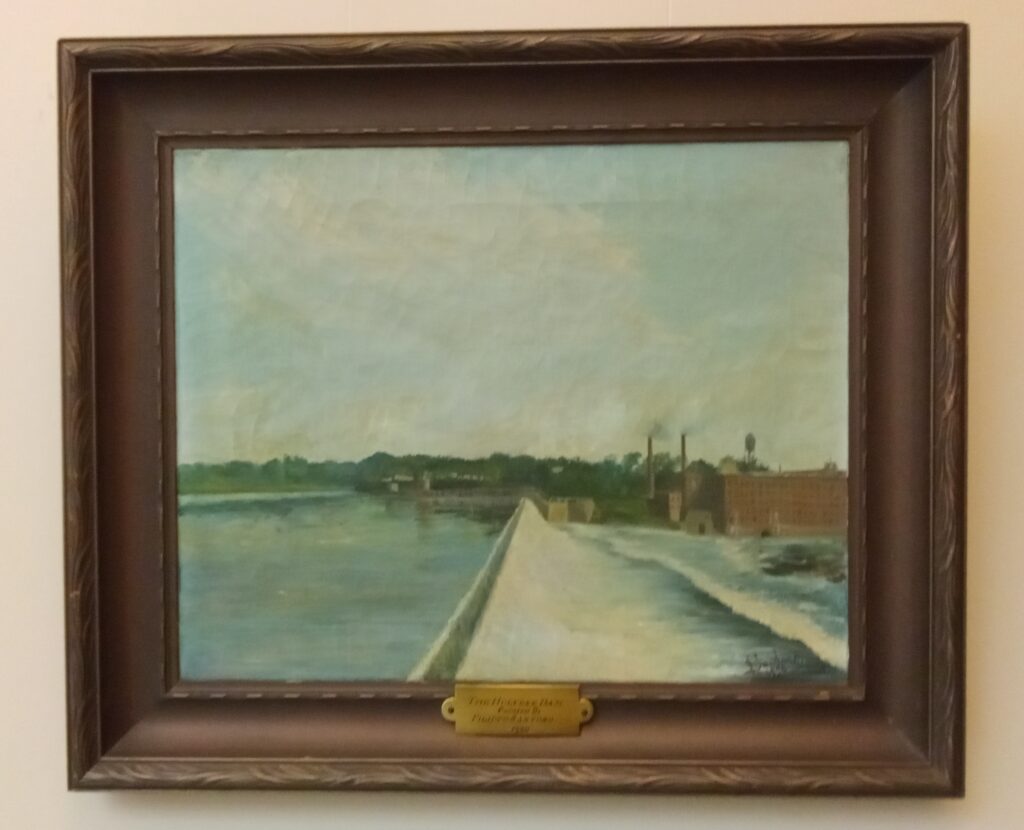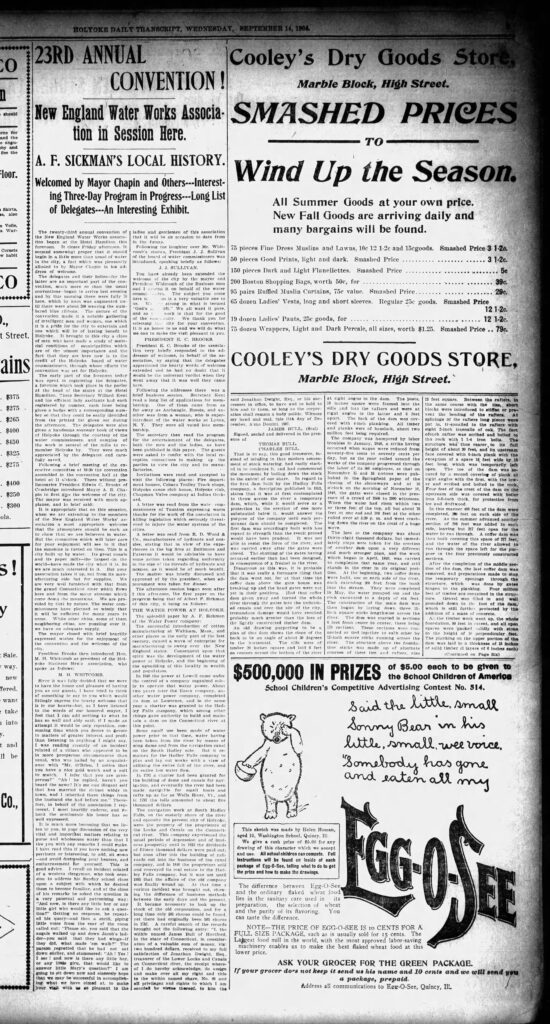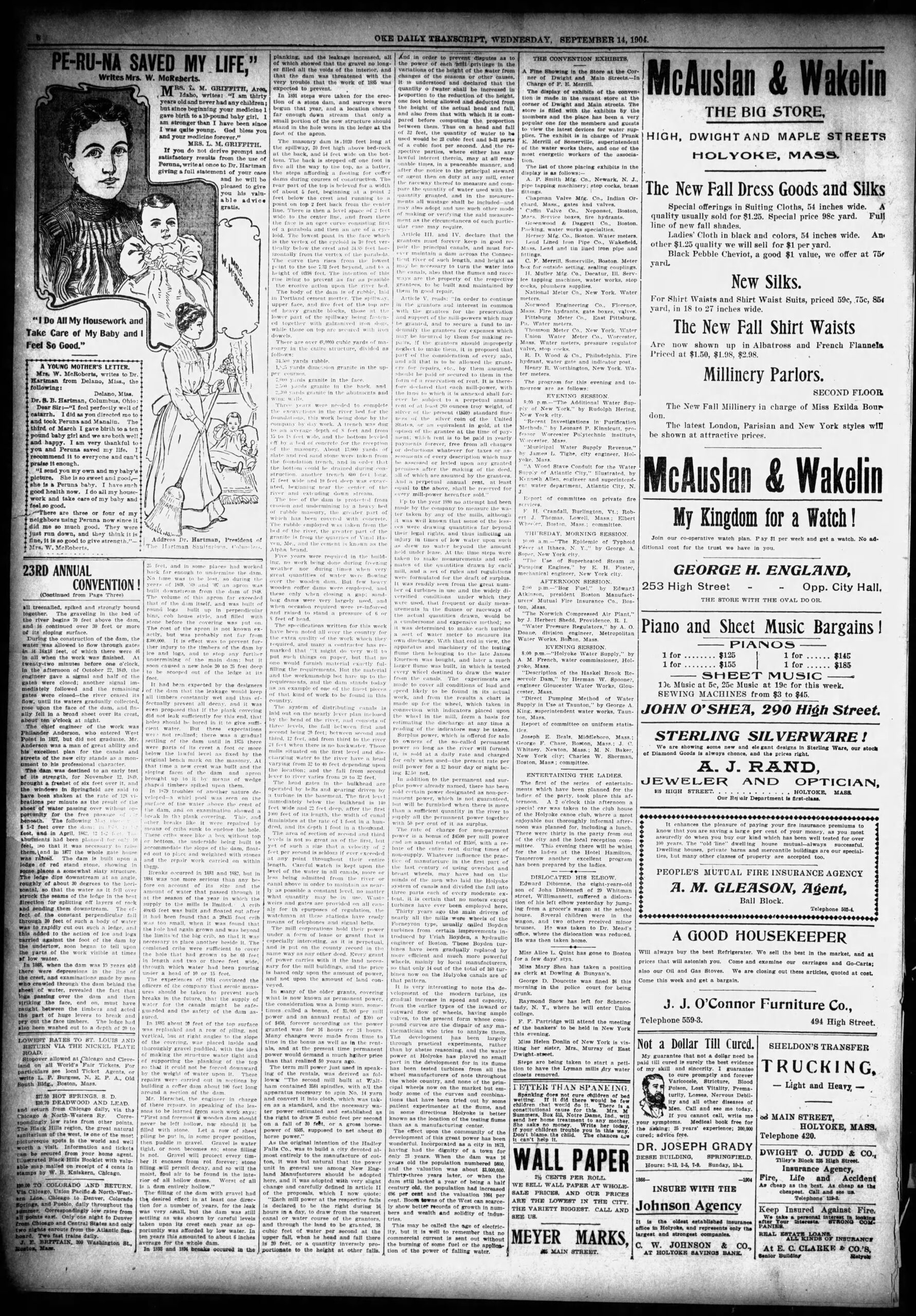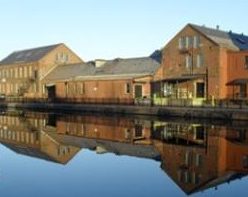[Drive from the Vietnam Veterans Bridge to the end of the dam access road.]
There have been many attempts at building a usable fish lift here at the Holyoke Dam. In the 1873 a wooden fish lift was made on the wooden dam. It was not used much by the fish. In 1949 the Federal Power Commission required the passage of fish and thus a concrete fishway one was put in place.
Shad and salmon move upstream in this Barrett Fish Lift. This fish lift was first built in 1955 and was the first such elevator. Holyoke Water Power was awarded a Conservation Service Award in 1956 for the unique fish lift. Lincoln Robbie Scott of South Hadley designed this fishlift. See the Scott page. He is the son of Raymond Scott. FINDAGRAVE
There is also a fishway that allows for these fish to swim back downstream after their journey upstream. The old fishway on the South Hadley side of the dam presently contains a water pipe that streams water down to where small eels congregate. These eels are attracted by the flowing water and try to climb up the pipe. They encounter a hole in the pipe that has a barrel below it. They fall into it and Holyoke Gas and Electric workers empty the barrel upstream. The spike of the first level canal has another pipe that allows fish that are stuck in the spike to travel back to the Connecticut River.
The Barrett Fishway is opened from the first of May to the middle of June every year. Listen to the podcast link. Fish are lifted during the spring migration over the dam by two large lifts – one in the tailrace of the turbines and the other in the river.
The Holyoke Dam is one of 12 dams that have been in place in the Connecticut River within the boundaries of Holyoke and South Hadley. 5 of those 12 dams were located at this the Great Falls location. This part of Holyoke is called the Hadley Falls due to the rapids at this point. See two fine videos on vimeo.com about this location. They are presented by Leo Labonte, a former resident of South Hadley, and are called “The Great Falls”
and “The 13 Dams of the Connecticut River”.
The two Hadley Falls Hydroelectric Turbines are inside the brick structure. Their combined yield is 35 Megawatts. Hadley Falls turbine 1 was built in 1952. Hadley Falls turbine 2 was built in 1986. Holyoke has always striven to be energy independent and it has been mostly just that. A coal plant called the Mount Tom Station started in the northern edge of the city in 1962 as a private firm. It generated 136 MW of electricity. At some point it became city owned. Amazingly, there have only been three owners of the canal system and the dam. First, it was the Hadley Falls Company, then the Holyoke Water Power, and then lastly Holyoke Gas and Electric. The only clause to add is the Holyoke Water Power firm was a part of Northeastern Utilities from 1967 onward.
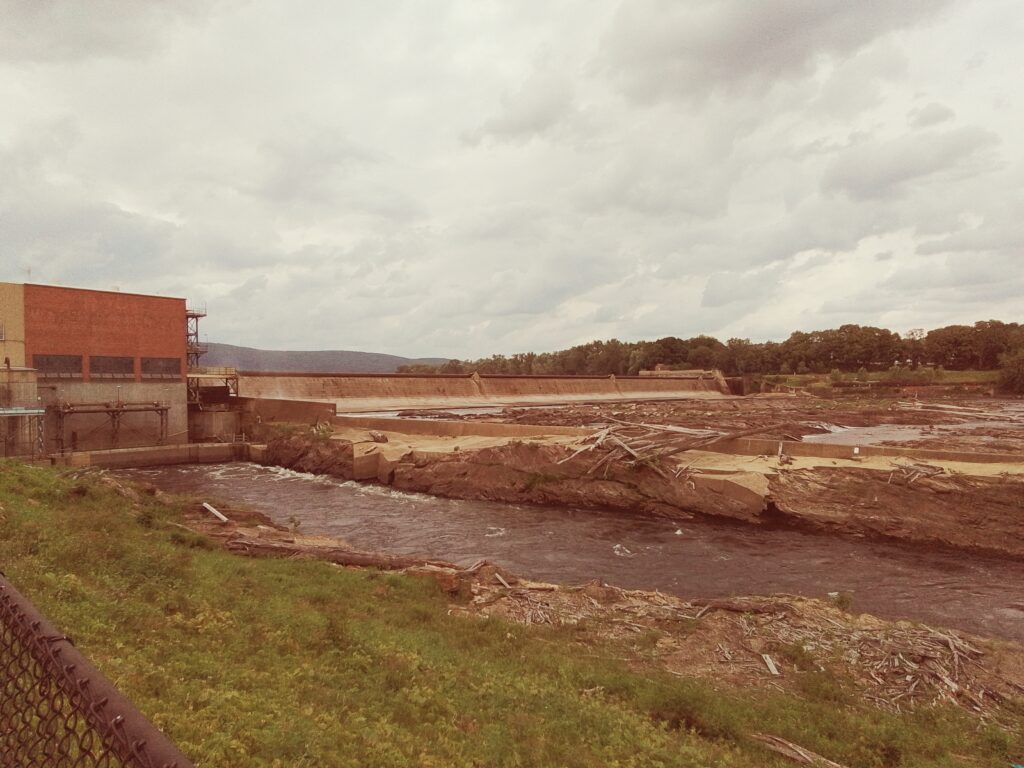
The best views of the Holyoke Dam are had from the Vietnam Veteran’s Bridge. If you are situated at the southwest corner of this bridge you can see a channel that allows water to flow from the turbines back into the Connecticut River in a controlled manner. The wall that controls the water flow in this channel is most apparent near the power station but it continues below water until it is near the bridge. In the middle of the bridge you have the best views of the physical geography of the region. At the northwest corner of the bridge you will be able to appreciate the bird life the best. At the southeast corner of the bridge, the flood-control walls are apparent along with tunnels below them for the race wastewater.
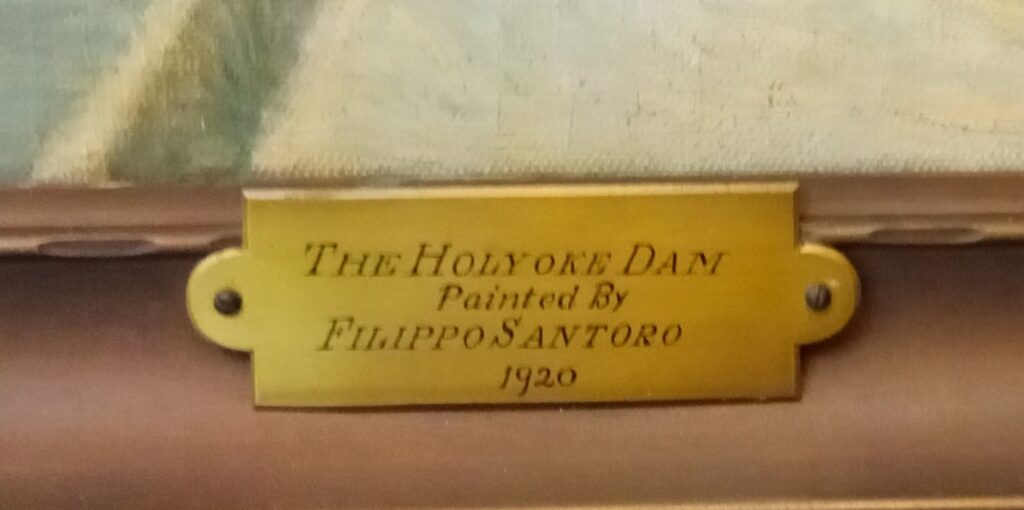
The Holyoke Dam as painted by Filippo Santoro 1920
